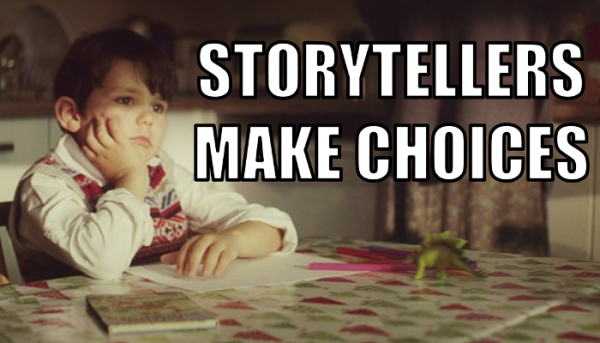
John Lewis, a UK-based retailer has used storytelling in its annual Christmas adverts since 2007. In this post, we deconstruct one of them by studying the storyteller’s choices.
First, watch the following John Lewis 2011 Christmas advert called The Long Wait.
The Long Wait’s foundation was built upon five story-choices:
- Story-choice #1: What’s the message? The purpose of any story is to deliver a satisfying ending that inspires an audience to do something. The storyteller chose to achieve this through delivering the proverbial message: It is better to give than to receive.
- Story-choice #2: How should we deliver that message? The storyteller chose to deliver the message through the pre-Christmas actions of a little boy.
- Story-choice #3: How should we order the events of this story? The storyteller chose to tell the story through a linear series (A,B,C) of events that demonstrate the slow passage of time. Such events include drumming fingers, staring at a clock, tossing and turning in bed, and the boy’s unsuccessful attempt to make the clock move faster.
- Story-choice #4: How should the audience interpret the little boy’s motivations? The storyteller chose to obscure the boy’s true motivation by relying on the audience’s preconceived notions about a child’s anticipation of receiving Christmas presents.
- Story-choice #5: How will we reveal the boy’s true motivation? By having the little boy prioritize his parent’s gift over his own, the storyteller simultaneously reveals the little boy’s true motivation and delivers the main message: it is better to give than to receive.
Storytelling is a series of choices that determine what to say, when to say it, all while being cognizant of how the audience will interpret those things. When done correctly, it’s magic.
Lastly, if you have a copy of The StoryHow PitchDeck (if you don’t, why not?), here’s a list of the cards represented within this story:
The StoryHow Method begins with the following definition: A story is the result (events) of people (roles) pursuing what they want (influences.)
Roles:
- Protagonist (#2): Little Boy
- Antagonist (#3): Time (#5) plays the role of antagonist
- Minor Characters (#4): The boy’s parents and sibling
- Time (#5): Time doubles as the role of antagonist (#3)
- Setting (#6): Little boy’s home at Christmastime
Influences:
- Response: Instinctive (#36): The audience’s instinct to assume that the little boy’s motivation is selfish
- Throughline (#40): The boy’s altruistic motivation to give his parents a Christmas present
- Who Knows What (#42): The storyteller knows the little boy’s motivation, but hides it from the audience until the very end
Events:
- Recurring Event (#18): Scene-after-scene reveals the slow passage of time
- Conflict: External (#20): Time is the only thing separating the little boy from the joy of gift-giving
- Conflict: Internal (#21): The little boy must demonstrate the discipline to wait until Christmas day
- The Twist (#27): The final revelation that the boy’s motivations were altruistic all along
And finally, the storytelling techniques that accompany the roles, events, and influences.
Techniques:
- Context (#45): By showing the boy’s actions in the context of Christmas, it’s easier to misdirect the audience from his true motivation
- Purpose (#46): Deliver the message while attaching it to the John Lewis brand
- The Big Idea (#48): It is better to give than to receive
- Scenes (#50): Show events that demonstrate the slow passage of time
- Challenges (#53): Little boy enduring the slow passage of time
- Shared Experiences (#55): The storyteller used the audience’s preconceived notions of children at Christmas to obscure the boy’s true motivations
- Symbolism (#57): The little boy represents youth; snow, presents, and decorated trees represent Christmas; and clocks represent time